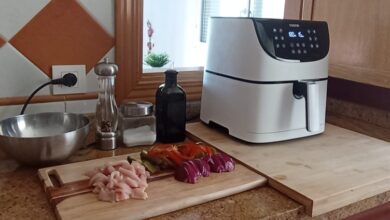5 tips to eat when traveling to a competition
It is often a good idea to bring some snacks and favorite foods, especially if you are going to be away from home for a long time and your favorites are not available at destination
Most athletes are not used to traveling for that, they often look for competitions or specialized training environments far from home.
Frequent trips can present a series of challenges such as training interruptions, climate changes, jet lag, food availability, etc.
For this reason the IOC has developed a series of tips to better cope with food during trips to sports competitions
1. Plan ahead.
Investigate the food models and their availability at destination before leaving home. The organizers of the competition and athletes who have been in this event on previous occasions can provide valuable information on what to expect.
This can help plan useful food supplements to take on trips, which can replace important missing items.
Contact the catering organizers at the destination to let them know the special needs regarding schedules and menus. Prepare a meal plan for the trip that incorporates the best of the available food offer (eg, airline catering, restaurants en route) as well as snacks to take with you.
2.Eat and drink well on the road.
Think that forced rest while traveling will reduce energy needs, but it will create more opportunities for high energy intake if you succumb to "eating out of boredom."
Be aware that you should only eat when there is a real need. When traveling to a different time zone, adopt the feeding patterns that suit the destination as soon as the trip starts.
This will help to adapt the biological clock. Take into account losses of liquids not appreciable in vehicles with air conditioning and cabins of pressurized aircraft. It has a beverage plan that helps maintain hydration.
3 You have to be careful with the hygiene of food and water.
Find out if it is safe to drink from the local water supply. If it is risky, limit yourself to sealed bottles of water and other cold or hot drinks. Beware of ice added to drinks, it is often made with tap water.
In high-risk environments, limit yourself to foods presented in good hotels or well-known restaurants. Avoid eating food from local stalls and markets, despite the temptation to live an "authentic cultural experience."
Limit well-cooked foods and avoid salads or unpeeled fruit that has been in contact with water or local soil.
4 Choose well between local options and supplement with non-perishable foods brought from home
It is often a good idea to bring some snacks and favorite foods, especially if you are going to be away from home for a long time and your favorites are not available at destination.
It should be remembered, however, that many countries prohibit the importation of fresh food: check in advance what is allowed to prevent the authorities from confiscation of prohibited items at the airport.
Do not run the risk of trying to introduce contraband food: you could deny entry to the traveler.
5 Follow smart tactics in restaurants, buffet dinners and when choosing take-away food establishments
Limit yourself to a meal plan based on what you normally eat at home or meet new nutritional needs instead of being overwhelmed by all the food available.
When possible, organize the menus and meal times with the restaurants, especially when eating with a large group. It is useful to be able to get to the restaurant with all the food ready to be served.
There are no previous results.




























